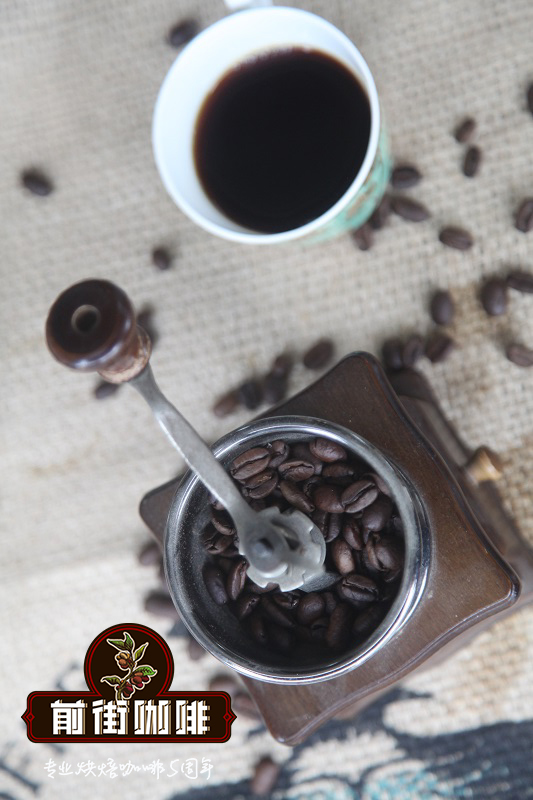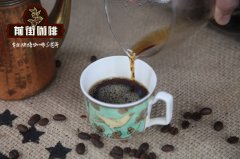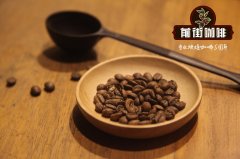Nicaraguan coffee pointed bourbon natural semi-decaf coffee what is decaf coffee

Professional coffee knowledge exchange more coffee bean information please follow the coffee workshop (Wechat official account cafe_style)
Nicaragua Mierisch El Minita Laurina Natural
Niagara Mieri boasts a natural semi-decaf coffee made from Minita's pointed body in the sun.
The natural extremely low caffeine, sparse, delicate and charming aroma of pointed bourbon is one of the oldest tree species in the world.
Bourbon Pointu, whose scientific name is Laurina, is the most primitive bourbon subspecies (Sub-Variety), from the island of Reunion near Madagascar (Madagascar). The leaves and plants of the coffee tree are smaller than the average, and the coffee is also smaller and pointed. It is also said to be the parent of the mocha species and is now the source of coffee trees in Latin America.
With very low caffeine, generally speaking, Arabica has about 1.2% caffeine, Robsta 2.2%, and pointed body bourbon (Laurina) is only 0.55%, which is much lower than more than half of the average Arabica.
The sweet aromas of tropical fruits and wildflowers are delicate and charming--
Natural low-cause variety
Two companies have to say about the discovery and cultivation of natural decaf coffee. Illy in Italy and ucc in Japan. The subjects they studied were beans called sharp-bodied bourbon.
Starting in 1989, illy failed experiments in Brazil and then transplanted to El Salvador as a surprise. Since 2008, Idillyum's natural semi-decaf espresso capsules have been sold. The yield of raw beans is not high, and the formula of Idillyum contains other Arabica beans, that is, impure pointed bourbon.
As early as the 1970s, when Yoshihiro Kawashima, an expert at ucc coffee in Uashima, Japan, was studying coffee cultivation in El Salvador, he heard an old farmer mention that "ancient, low-caffeine coffee trees may still live on French bourbon island." Later, he went to Africa to look for "ancient and decaffeinated coffee trees." And came back to nothing. A phone call in 2001 brought good news. Sure enough, it is the "bourbon piontu" that has disappeared for half a century. The plan to restore the pointed body bourbon in its earliest birthplace shocked the world. The low production of 700kg in 2006 led to the high price of 7350 yen per 100g for ucc in April 2007, which was five times more expensive than Blue Mountain that year.
In the world's major roasters looking for the cultivation of natural decaf coffee craze, a country can not be ignored. The development of natural low-caffeine coffee is actually a process of discovering and modifying coffee tree genes. As a result, Ethiopia, the birthplace of Arabica and a treasure trove of Arabica genes, has not yet joined the war. In 2008, officials from Ethiopia's Ministry of Agriculture announced that natural low-cause varieties had been found. And the matter is wrong, I do not know whether it is true or not.
In the past, most of the natural low-caffeine varieties found by scientists came from Ethiopia, Mozambique or Madagascar and the Scarlin Islands. In 2008, a new breed of Cameroon coffee was found, "Charyeriana Coffee". It is self-pollinated like Arabica and the seeds are caffeine-free.
How to cultivate new coffee varieties with low cause, delicious taste and high yield has become a prominent study in the coffee planting industry in recent years.
Important Notice :
前街咖啡 FrontStreet Coffee has moved to new addredd:
FrontStreet Coffee Address: 315,Donghua East Road,GuangZhou
Tel:020 38364473
- Prev

Colombian coffee beans pointed bourbon natural decaf coffee what is decaf coffee
Professional coffee knowledge exchange more coffee bean information please follow Coffee Workshop (Wechat official account cafe_style) Colombia Cafe Inmaculada Burbon Pointu country: Columbia production area: Cauca Valley altitude: 1740-2040 m treatment: washing grade: Excelso variety: pointed Bourbon Columbia perfect Manor pointed Bourbon Natural low Cafe
- Next

Ethiopian coffee Shakiso G1 decaf series what is decaf coffee
Professional coffee knowledge exchange more coffee bean information please follow the coffee workshop (Wechat official account cafe_style) Ethiopia low caffeine series Shakiso G1 tanning (hanging ear bags) Ethiopia Decaf Shakisso G1 Natural 0.1% very low caffeinated flavor very refreshing Mountain Water Decaf is the use of Mexico's highest peak Pico de Orizaba (
Related
- Detailed explanation of Jadeite planting Land in Panamanian Jadeite Manor introduction to the grading system of Jadeite competitive bidding, Red bid, Green bid and Rose Summer
- Story of Coffee planting in Brenka region of Costa Rica Stonehenge Manor anaerobic heavy honey treatment of flavor mouth
- What's on the barrel of Blue Mountain Coffee beans?
- Can American coffee also pull flowers? How to use hot American style to pull out a good-looking pattern?
- Can you make a cold extract with coffee beans? What is the right proportion for cold-extracted coffee formula?
- Indonesian PWN Gold Mandrine Coffee Origin Features Flavor How to Chong? Mandolin coffee is American.
- A brief introduction to the flavor characteristics of Brazilian yellow bourbon coffee beans
- What is the effect of different water quality on the flavor of cold-extracted coffee? What kind of water is best for brewing coffee?
- Why do you think of Rose Summer whenever you mention Panamanian coffee?
- Introduction to the characteristics of authentic blue mountain coffee bean producing areas? What is the CIB Coffee Authority in Jamaica?

